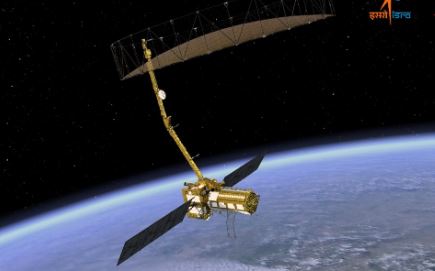Sriharikota (Andhra Pradesh): As ISRO is set to launch the NISAR satellite onboard a GSLV-F16 rocket later Wednesday, here are some of the significant highlights of the satellite jointly developed with US’ NASA.
Some of the highlights of the mission
- In September, 2014, NASA and ISRO sign agreement to launch a joint Earth Observing Satellite Mission.
- NISAR (NASA-ISRO Synthetic Aperture Radar) mission marks the first collaboration between the two top space agencies on a project of this scale and marks the next step in Earth-observing mission.
- It becomes first satellite mission between the two space agencies for the use of double L-band and S-band radar frequencies to measure changes on the Earth’s surface less than a centimeter across.
- NASA would provide L-band Synthetic Aperture Radar, a high rate communication subsystem for science data, GPS receivers while ISRO would provide the spacecraft bus, the S-band radar and the launch vehicle, GSLV-F16.
- NISAR satellite would provide a 3D-view of Earth’s land and ice. It would continuously monitor earthquake and landslide prone areas and determine how quickly glaciers and ice sheets are changing.
- Data from NISAR would provide critical insights to help governments and decision makers for natural and human caused hazards.
- It would measure the woody biomass and its changes, track changes in the extent of active crops, understand the changes in wetlands extent.
- Map Greenland’s & Antarctica’s ice sheets, dynamics of sea ice and mountain glaciers.
- Characterise land surface deformation related to seismicity, volcanism, landslides, and subsidence and uplift associated with changes in subsurface aquifers, hydrocarbon reservoirs.
- NISAR is the most advanced radar system every launched by NASA or ISRO. It would generate more data on a daily basis than from any previous Earth satellite missions.
- GSLV-F16 becomes the first launch vehicle for ISRO to launch an earth observation satellite in a Sun-synchronous Polar Orbit (SSPO).
- The GSLV-F16/NISAR is the 102nd mission from Sriharikota.
- The first 90 days after the launch would be dedicated to commissioning of the satellite in order to prepare the observatory for science operations.
PTI
